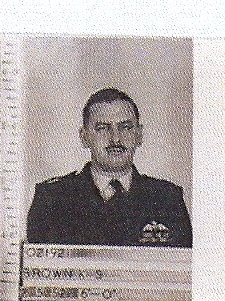Over the last week or so The Family History Writing Challenge has been discussing scene and summary, the difference between the two, and how to make the most of both. We have also learned about the “story middle” and how to create tension and interest through the finding of obstacles, how to transition from a crisis point where the person in the story reaches their lowest point, to the climax where the person in the story regroups and finds the strength to overcome the obstacles and move forward. I have tried to apply this format to the story of my wedding day by:
-
Using scene and summary to transition from one home to another
-
Using dialogue between major characters on the day to create the first obstacle
-
Using scene and dialogue to increase the tension of an additional obstacle
Here is what I have come up with for the “middle” of my story. Although I am of the opinion that it still needs some work, I am wanting to move forward to the next phase, so will come back to this passage during the editing process.
As I walked into my in-laws house I was immediately struck by the chaotic racket and bustle within. There were people in every room, all talking at once in excited tones. Hairstyles were being created in the main bedroom, the lounge room was a meeting place for all manner of women having their makeup done, Noelene was lovingly pressing my bridal gown in the kitchen, and seated at the dining room table were four hefty groomsmen hungrily devouring a large tray of freshly made sandwiches. The rooms were filled with the heady scent of summer and feminine perfumes.
“Julie, I think we’ve got a problem with the bridesmaids hairstyles,” my sister Kellie said as she guided me into the bedroom.
“Gen, what have you done to your hair?” Words failed me as I stood in front of Gen, appalled at the sight of what she had done to herself.
“I told you I didn’t want to wear my hair that way, so I had it cut off!” Genevieve declared.
“But you’ve got a crew cut. Suzie won’t be able to do anything at all with that,” I wailed.
I turned and walked from the room just as the tears started to well. How could Gen cut her hair so short the morning of my wedding? All three other bridesmaids had shoulder length hair that had been prettily flicked from their faces in the Farrah Fawcett-Majors, devil-may-care style which was all the rage.
Genevieve had been a friend for the previous 10 months and we had shared funny moments and tears in that time. Gen was a dressmaking and millinery teacher at the local TAFE College and she was to have made the bridesmaids dresses, but when there had been no calls for fittings I had started to worry. Just four short weeks out from my wedding day she had let me know that she had changed her mind about making the dresses. I had come face to face with the realisation that Gen had not been the friend that I had thought she was, and I was left with the mammoth task of finding four bridesmaids dresses in my favourite apricot tones that would be available for hire.
I stood in the middle of the stuffy lounge room, shocked to the core that Gen would let me down yet again!
Terry watched helplessly as the tears trickle down my cheeks. He gave me a cuddle and then quietly and gently said “Jules, someone’s stolen all the car decorations”. I just stood in the lounge room, gaping at him.
“Who the hell would do something like that?” I howled. Tears flowed in earnest now, coursing their way over cheeks and chin. All I could think of in that split second was that my wedding day was disintegrating around me. Firstly, a wayward bridesmaid that I was sure had managed to ruin my idea of how the wedding photos should look, and now there were five bridal cars sitting outside the house with no decoration. I truly believed my wedding day was in chaos, and just an hour before we were due at the church. Tears flowed, and I was so panicked I could hardly breath, when my gorgeous sister Kellie put her arms around my shoulders and whispered “I think I can fix this.”
I stood gazing at her in disbelief as Kellie spent precious minutes telephoning her recently married friend to see if she still had the decorations from her wedding day. As luck would have it she not only had the ribbon, tulle and flowers, but also a tulle swan for the bridal car.
“Julie you have to finishing getting ready or you will be way to late to the church! I’ll go with Terry to get the decorations and be back in no time at all”, Kellie promised.




















You must be logged in to post a comment.